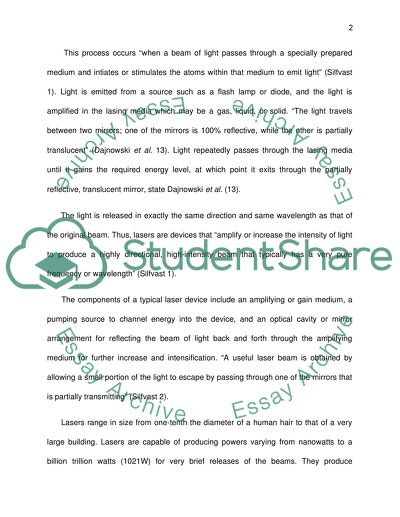Cite this document
(“Lasers Essay Example | Topics and Well Written Essays - 1500 words - 1”, n.d.)
Lasers Essay Example | Topics and Well Written Essays - 1500 words - 1. Retrieved from https://studentshare.org/chemistry/1613897-lasers
Lasers Essay Example | Topics and Well Written Essays - 1500 words - 1. Retrieved from https://studentshare.org/chemistry/1613897-lasers
(Lasers Essay Example | Topics and Well Written Essays - 1500 Words - 1)
Lasers Essay Example | Topics and Well Written Essays - 1500 Words - 1. https://studentshare.org/chemistry/1613897-lasers.
Lasers Essay Example | Topics and Well Written Essays - 1500 Words - 1. https://studentshare.org/chemistry/1613897-lasers.
“Lasers Essay Example | Topics and Well Written Essays - 1500 Words - 1”, n.d. https://studentshare.org/chemistry/1613897-lasers.


